Clancy Tucker's Blog, page 85
April 6, 2020
7 April 2020 - ALDRIDGE SAWMILL RUINS HIDDEN IN OVERGROWN FOREST
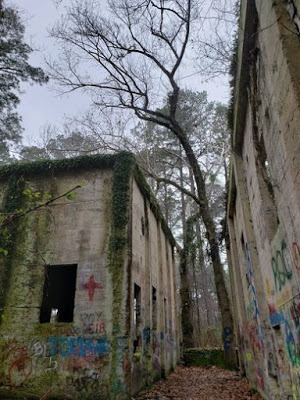
ALDRIDGE SAWMILL RUINS HIDDEN IN OVERGROWN FOREST
G'day folks, The 19th-century ruins of a once busy sawmill hides deep in an overgrown forest. Hal Aldridge relocated from Rockland, Texas, in the early 1900s, and began purchasing stands of longleaf yellow pine in Angelina County. In 1903, he began the construction of a sawmill near a scenic bend of the Neches River, which he completed by 1905. As business grew, the Aldridge Sawmill produced approximately 125,000 board feet of lumber daily and employed 500 people. The site featured employee housing, a commissary, hotel, post office, blacksmith shop, train depot, two schools, and various shops and saloons.

On August 25, 1911, a fire destroyed the original wooden mill buildings. They were replaced in 1912 by the reinforced concrete structures that stand on the site today.
Business does not seem to have suffered for long, and by 1913, the population of Aldridge is estimated to have been anywhere from 1,000 to 1,500 residents.
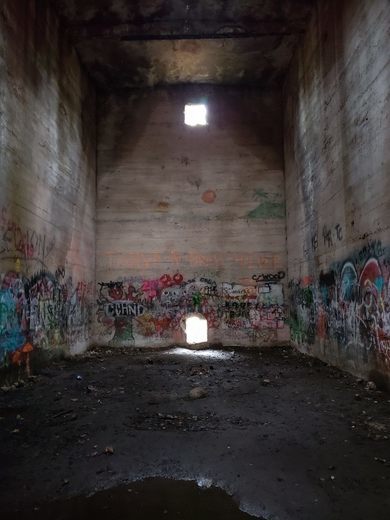
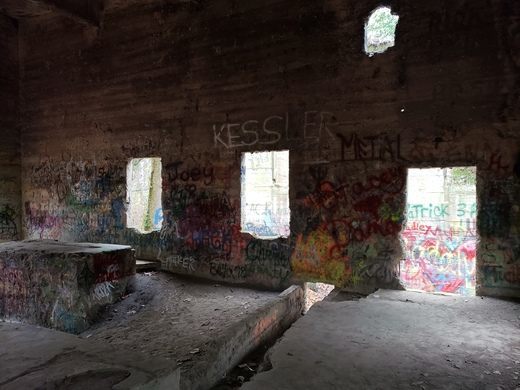
Another fire in 1914, however, caused Aldridge to depart the lumber business, apparently leaving it in the hands of his brother, who was also the company’s vice president. Operations continued as business began to slow, until another fire in 1919 finally ended the Aldridge Lumber Company.
The township was essentially abandoned by 1920, eventually being annexed into the Angelina National Forest. Today, visitors can see the remains of four concrete buildings, as well as the mill pond that would have once fed the sawmill’s boilers.

Clancy's comment: I've been to many sawmills and met the people who worked in them. Man, it's a tough way to earn a living.
I'm ...


Published on April 06, 2020 14:00
April 5, 2020
6 April 2020 - JOHN MICHAEL CUMMINGS - GUEST AUTHOR

JOHN MICHAEL CUMMINGS - GUEST AUTHOR -
G'day folks,
Today, I interview an author from West Virginia.
Welcome, John Michael ...
1.TELL US A LITTLE ABOUT YOURSELF AND YOUR WRITING JOURNEY.
“I didn’t ask to be born,” a distraught young friend texted me recently. “‘I am lonely’ is written across my forehead.”
If you want the truth about me, it has just been said in the text message above. That is, when my border personality disorder (BPD) strikes. The rest of the time, I am enduring the writing life, appreciating it if and when I can, and always living by its motivation.
I am single, childless, poor, alone, unloved, oftentimes emotionally miserable and unstable, physically disabled, and uncelebrated as a writer. I live in a 220-year-old house with no hot water and only one space heater. I have no TV, no stove in my kitchen, no washing machine, no dryer.
"Save your pity for toothless tigers and dancing bears," says Telly Salavas in "Vendetta," a 1964 episode of gritty TV drama “Combat!” “I will fight to the end, so we all can fight to the end of the end.”
On paper, one might say I have achieved some success. But it’s an illusion. One can publish a hundred short stories, several novels, win awards, write essays, report news to a quarter of a million readers, speak behind a microphone to hundreds, and teach college English—and be less of a person every day for it.
More of that in a moment.
2.WHEN AND HOW DID YOU BECOME A WRITER?
I turned to words when painting and drawing failed me, when pigment and charcoal could do no more for me. I blame Bruce Springsteen for making me a writer. That Jersey rat broke into fame when my life broke down. All I had were his songs to pretend were mine.
How could he know me better than I did? I wore out cassette tape after cassette tape of his music. Today, I hate him more than love him. No man should soar to interplanetary acclaim. Yet his grocery list, if mumbled, if strummed by a guitar, would see billions. If I ever chance upon him—say in Hell’s breadline—I’ll feed him a knuckle sandwich. Saved and ruined by a rat from Jersey. Imagine that. I shake my head.

3.WHAT TYPE OF PREPARATION DO YOU DO FOR A MANUSCRIPT? DO YOU PLAN EVERYTHING FIRST OR JUST SHOOT FROM THE HIP?
“Shoot from the hip”? Funny! I have two titanium-steel hips. Both femur balls were replaced two years ago.
To answer, I mentally outline. I prefigured where to begin. I hold in my heart the turmoil of the middle of the story or novel, and I hope, even pray, to execute a strong ending. But, no, I do not outline on paper. God, no!
Accountants do that. Heartache-ridden writers work organically. That is, we grow the story in the nitrogen-rich soil of our minds that brings up bleach-white magic mushrooms of a narrative.
That is the way of literature.Amen.
4.WHAT DO YOU ENJOY MOST ABOUT BEING A WRITER?
Sorry, but joy doesn’t figure into it. Making love to a kind and attractive woman is joyous. Writing is arduous. Oh, there are moments—brief moments—of elation when a poetic combination of words is discovered by invention. But perspiration, not inspiration, is the name of the game.
5.WHAT IS THE HARDEST THING ABOUT BEING A WRITER?
The mental toil of excellence pulls at my mind as if it were warm taffy. The mind has rooms never to be unlocked. Demons kneel inside, naked, waiting in the black, waiting to spring free and cause madness, crying jags, violence, and suicide.
A warning to all writers: The mind is to be patrolled and guarded.
6.WHAT WERE YOU IN A PAST LIFE, BEFORE YOU BECAME A WRITER?
Officially, my name was Michelangelo di Lodovico Buonarroti Simon. The Pope, Jullis II, said to me, “Buonarroti, you have paint in your veins.” I replied, “And you, my lordship, you have fewer marbles in your head every day.” I was sentenced to four years on the scaffold.
7.WHAT IS YOUR GREATEST WRITING ACHIEVEMENT?
I have no “greatest” achievement. That is, I have not yet reached the finishing line of a story or novel for which I feel entitled a gold metal of sorts.
Do I devalue my work? No, but I have no illusions of being other than largely unknown and unread.
I am a good writer, but I am a better writer because I am ravenous for success and faint from the hunger for it.
8.WHAT ARE YOU WORKING ON AT THE MOMENT?
The word is “magnum opus.” That is, my best writing, hard-fought and revised to the trillionth power and fired down the page in flames.
The plot centers of an estranged son struggling to care for his father who is failing to dementia. They inhabit a hunk of ugly raw woodland in the Allegheny Mountains of West Virginia. Circling their ramshackle house and potshotting at them with a high-powered rifle is an inbred, genetic throwback with half a face.
Why does this creature insists that the land is his? What sin did the father commit? The answer is the payoff.
9.WHAT GENRE DO YOU WRITE?
A gal on LinkedIn recently said to me: twelve people will define “literary fiction” thirteen different ways. But literary fiction it is. “Genre” is a four-letter word. There is, or can be, even must be, romance, horror, and science fiction in any story, short or long. Good writing runs on the petrol of originality, sincerity, and effort.

10.DO YOU HAVE ANY TIPS FOR NEW WRITERS?
Be inspired by the published writers whose words excite you. Study grammar. Know how to build a sentence like a carpenter with two-by-fours. Then, know when to break the rules of grammar for effect.
11.DO YOU SUFFER FROM WRITER’S BLOCK?
No, but I suffer from clinical depression. The only medication that has helped also hinders me, because I vomit it up fifty percent of the time. Day are dark, and there is no solution but to suffer, which solves nothing, only causes pain.
12.DO YOU HAVE A PREFERRED WRITING SCHEDULE?
All day I work, if I can muster the mental energy.
I read between writing sessions, and I read for inspiration: any work by William Faulkner and William Gay. Ayn Rand’s novels whip my brain to a standstill, but I love every word she puts down—and to think she wrote, revised, and revised, and revised a 1000-page novel before the age of word processors. Today, there are lightweight bimbo beauties pushing their hackneyed self-published novelettes all over the internet. Then, there is Ayn Rand.
13.DO YOU HAVE A FAVOURITE WRITING PLACE?
The tiny middle bedroom in my ancient Harpers Ferry, West Virginia, home. The coal furnace in my cellar is 189 years old. This drafty old woman-and-man killer of a house is my writing hovel—littered with empty frozen dinner trays on the floor, an uncapped bottle of gin on my desk, and an orange tabby perched on my shoulder like a parrot.
His name is Ralph.
Once, maybe twice in my life, I have taken a laptop to a coffee shop. The distractions of people around me, walking behind me, maybe peeking over my shoulder and reading, and the insufferable prattle of voices—I cannot write a word. Complete privacy is mandatory.
14.WHO IS YOUR FAVORITE AUTHOR AND WHY?
As noted, I have tremendous regard for Ayn Rand, author of Atlas Shrugged, simply because of the sheer power and breath of her sentences and because of the tireless expanse of her writing, as she writes a hundred miles into the earth and a thousand miles down the iron rails of this nation’s train tracks about social hypocrisy of altruism and the ever overheating motor of bureaucracy.
But I do not advance what has been called her philosophy of Objectivism. I simply think her writing is electrifying.
A word to misogynistic, sexist, and chauvinistic male writers: As sexy as Ayn Rand is, she’s also more a man than you all.
15.WHAT WAS THE WORST COMMENT FROM A READER?
My debut novel, The Night I Freed John Brown, was scorched by a reviewer for School Library Journal. It killed the start of my career, I truly believe. The reviewer called my novel slow-paced, overworked, and uninteresting. It shredded my heart. Being a prominent, even supremely influential publication, School Library Journal could not be topped, or stopped, not by the many smaller review journals and newspapers that opposed her.
Today, the pain of her review is much less, almost inconsequential, because I now realize there is another power, another force, at play with the success of a novel: word-of-mouth. If the novel is strong and affecting, word spreads, despite reviews. That is, to an extent.
Ten years since the release of first novel, I am nearly indifferent to what reviewers run their mouths about. I know what I have done is good, I don't need their affirmation. They can kiss my ass.
16.WRITERS ARE SOMETIMES INFLUENCED BY THINGS THAT HAPPEN IN THEIR OWN LIVES. ARE YOU?
My writings are largely influenced by happenings in my life. My works are labeled “fiction,” but I consider them truer, more factual, than books shelved as nonfiction. Why? Because for the last thirty years, I have been writing a running diary in which I publish in 500-, 1500-, 6000-, and 60,000-word entries.
"Write what you know," is said every day by writing instructors the world over. How else can we achieve an emotive affect. That is, how else can we make the reader care, or at least be curious, say, if then mean hero is eventually destroyed.
17.OTHER THAN WRITING, WHAT ELSE DO YOU LOVE?
If for some godfroresaken reason, I should surrender to failure at writing, I would return to making gravestones and memorial monuments, as I did in my twenties in Orlando, Florida. This time, however, I would seek out work on slate, rather than granite, grave markers in New England where they are popular, as those are the only ones not yet produced by automation and also where I would not sweat to death in canvas coveralls and a welder’s mask, both required to do the work.
18.DID YOU HAVE YOUR BOOK / BOOKS PROFESSIONALLY EDITED BEFORE PUBLICATION?
Fortunately, no. I know grammar very well. I worked for years as a copyeditor, as well as a journalist. I know the narrative very well. I have an MFA in creative writing from University of Central Florida. I've studied the thickest books on grammar and editing and storytelling. From rough draft to submitted version, I’ve had no help, for most part.
But I strongly believe in collaboration—only if the other reader and editor is of skilled ability.
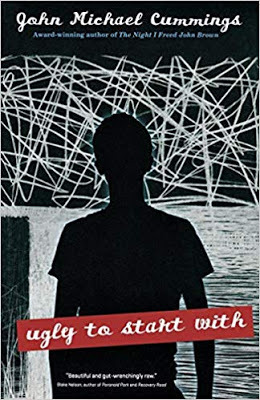
19.DESCRIBE YOUR PERFECT DAY.
Two raw eggs and a shot of gin at seven a.m. Then six hours of writing with concentration and momentum. But any day is in the realm of good or even perfect when clinical depression doesn’t leave me numb and motionless in bed, eyes open, seeing nothing but gray or yellow.
20.IF YOU WERE STUCK ON A DESERT ISLAND WITH ONE PERSON, WHO WOULD IT BE? WHY?
Fragile author Carson McCullers who’s most known for The Heart is a Lonely Hunter. I adore her. I would care for her, for she was ill most of her life. I would make love to her in the island surf, and we would enjoy fish fries with her at midnight around a campfire and talk about William Faulkner’s orotundity.
Carson was a very strange, very proper gal, and I am a very strange, improper man desperate to be a woman’s hero. I miss her. Though, how? I never knew her. She died at fifty, when I was just four. Time did not synchronize us, tragically, cruelly. Still, I love her.
21.WHAT WOULD YOU SAY IF YOU HAD THE CHANCE TO SPEAK TO WORLD LEADERS?
I would make ugly, barbaric world leaders read Remembrance of Things Past by Marcel Proust—backward!
But rather than say anything to them, I'd make them live in abject poverty for five years and depend on handouts. That would strip them of pride and vanity.
22.WHAT ARE YOUR PLANS FOR THE FUTURE?
My future is what most writers’ ought to be: to produce my very best every day. To muscle my mind and heart and soul against the banal and commonplace that the keyboard prefers to write. Further, to bring from my spirit a supernova novel like The Grapes of Wrath by John Steinbeck, or the short story collection I Hate To See That Evening Sun Go Down by William Gay.
23.DO YOU SEE YOURSELF IN ANY OF YOUR CHARACTERS?
Yes, usually in the narrator and hero both, who are often one. Since I often write in first person, I take over the difficult job of superimposed roles as storyteller and character in one, as a result of which the “I” is called an “unreliable narrator,” a term that came about in the windiness of those who talk about fiction, rather than write it.
24.HOW MUCH THOUGHT GOES INTO DESIGNING A BOOK COVER?
Much effort should go into it. I personally had little to say in the covers of my books, as I had gone the traditional route of publishing and publishers that usually a design staff.
In short, the book cover must be an invitation into the book, yet it should reflect it accurately.
25.ARE YOUR BOOKS SELF-PUBLISHED?
No. Hell, no. There’s an inherent advantage in this direction, I believe, in that since I am not paying for the service of being published, but rather being paid, I must earn this pay with my best writing.
26. DESCRIBE YOURSELF IN FIVE WORDS.
"I am unhappy and lonely." May I have another measly five words? "I am happy and popular."
Along with my depression diagnosis, borderline personality disorder (BPD) creeps in. Those with BPD view life in extremes, such as all is good or all is bad. Their opinions of others can reverse quickly. Someone seen as a friend one day will be an enemy or traitor the next.
Terrible way to live. Takes constant self-monitoring.

27.WHAT PISSES YOU OFF MOST?
Indifference. Mindlessness. Detachment. Coldness. Women who love their dogs more than their husbands. Husbands who don’t bring their women flowers and make love to them. Arrogant, loud people. Opinionated people. Anything-goes Democrats. Racist Republicans. “Me too” women who lie. Men who swagger sexually with power. Criminals who beat their victims. Stupid judges who free them. Cop haters. Cop murderers.
I dislike Arnold Schwarzenegger immensely. I very much like Lou Ferrigno.I deplore the predictable, whether in words, personalities, or in any respect of the world around us.
28.WHAT WOULD BE THE VERY LAST SENTENCE YOU’D WRITE?
"This life was never meant for me. "
29. WHAT WOULD MAKE YOU HAPPIER THAN YOU ARE NOW? CARE TO SHARE?
I’m not happy now. I’m unhappy. Oh, I smile. I’m pleasant. But I’m totally faking it. People think I’m happy. But I hurt inside most of the time. I just refuse to give up my dignity by glowering at people or by being surly. I would only feel worse hurting others. What keeps me going, living, are the smiles I receive even though I am faking it.
30. ANYTHING YOU’D LIKE TO ADD?
Thank you for the opportunity to be interviewed. I hope I have contributed meaningfully.

AMAZON

Clancy's comment: Well done. Thank you, John Michael. Loved your frank answers. Look after yourself, and keep writing when you can.
I'm ...


Published on April 05, 2020 14:38
April 4, 2020
5 April 2020 - AMAZING GOLUBAC FORTRESS IN SERBIA
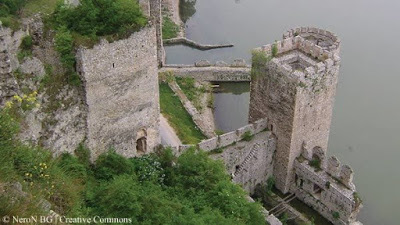
AMAZING GOLUBAC FORTRESS IN SERBIA
G'day folks,This 14th century castle withstood years of battle but is now sliding off the hills into the Danube. Golubac Fortress is one of the best preserved medieval fortresses in Europe. Yet the advent of modern technology has submerged some of the outer walls of this storied Serbian fortification, finally causing the decay of a powerful compound that survived years of war and battle.
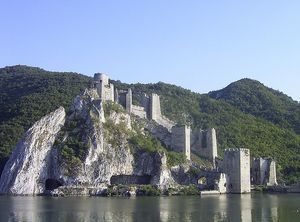
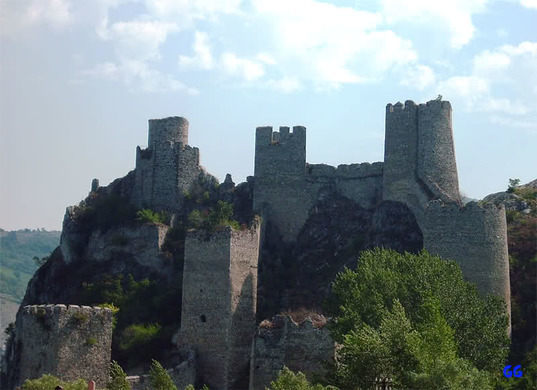

Comprised of 10 different towers protecting three internal compounds, Golubac Fortress was a powerhouse guarding the Danube. Despite its formidable structure, it changed hands many times throughout its existence, but even war and constant attack could not destroy the thick stone walls. Unfortunately, the only thing strong enough to begin the death of Golubac was modern technology.

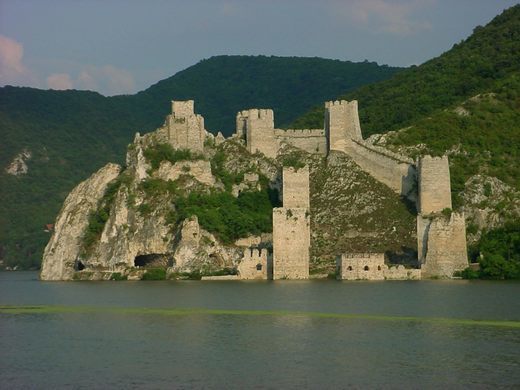
In 1964, a hydroelectric dam on the Danube caused flooding along its shores. The rising water levels eventually submerged Golubac’s outer walls along the lower bank. Along with the Danube’s invasion of the fortress, a road was created that passed through the walls, once again proving that the only way to breach Golubac was with the technology of modern progress and infrastructure.
In 2005, a campaign to restore the overgrown fortress was undertaken and Golubac is now a popular tourist site in Serbia, especially during boat tours of the Danube.
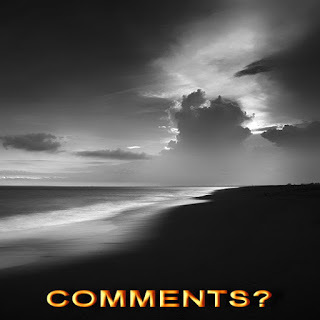 Clancy's comment: It would not have been easy to construct, but I'd love to visit it with my cameras. I'm ...
Clancy's comment: It would not have been easy to construct, but I'd love to visit it with my cameras. I'm ...


Published on April 04, 2020 14:32
April 3, 2020
4 April 2020 - Old Beacon Hat Mill, Beacon, New York

Old Beacon Hat Mill Beacon, New York
G'day folks,
I've found another one for you. A 19th century hat factory still stands as a crumbling ruin in upstate New York.
Since it was established in 1879, this old mill has been repurposed over the past century to suit the ever-changing industries of Beacon, New York. It has changed many hands throughout its lifetime.



Some of the last companies that operated here were The Merrimac Hat Company, which sold the property in 1949. After that, Beacon Terminals Corporation owned the property and it was used as a warehouse. In the 90s, the property was acquired by real estate developer William S. Ehrlich and has been in increasing states of ruin ever since.

Clancy's comment: Hats? Real hats I guess.
I'm ...


Published on April 03, 2020 15:06
April 2, 2020
3 April 2020 - SPIDER WEB RICE FIELDS IN INDONESIA
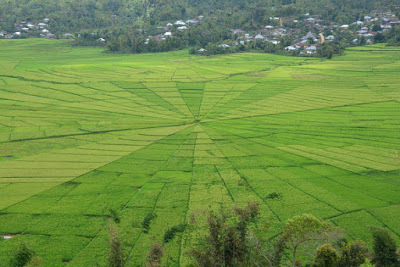
SPIDER WEB RICE FIELDS IN INDONESIA
G'day folks,The unique design of these rice fields was created by the traditional way communal rice paddies were divided up among the indigenous people. The colorful rice paddies found throughout Asia are commonly laid out in rectangular plots, or sometimes as stepped terraces, adding to their natural beauty. On the island of Flores, however, the rice fields form a delightfully unique shape, one that looks like a giant spider web.


This wonderful insect resemblance was not intentional, but rather the result of the traditional communal agriculture of the indigenous Manggarai people. Centuries ago, the cultivated land, known as lingko, was shared by the entire village. The communal fields were circular, with the lodok at the center, where ceremonial rituals were held around the harvest.


Each family was allocated a segment of the rice field, radiating from the center outward. (Each was inaugurated by the sacrifice of a water buffalo.) The more resources a family had, the larger their slice of the pie; at the time, the rice fields were shaped like pie charts. Later, the paddies were further subdivided by the decedents of the original owners, leading to the striking, web-like shape of the lingko today.
 Clancy's comment: I've photographed some of these in Bali. The trip up the mountains was not easy, but my first view of these was just gob smacking. I'm ...
Clancy's comment: I've photographed some of these in Bali. The trip up the mountains was not easy, but my first view of these was just gob smacking. I'm ...
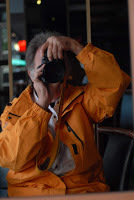
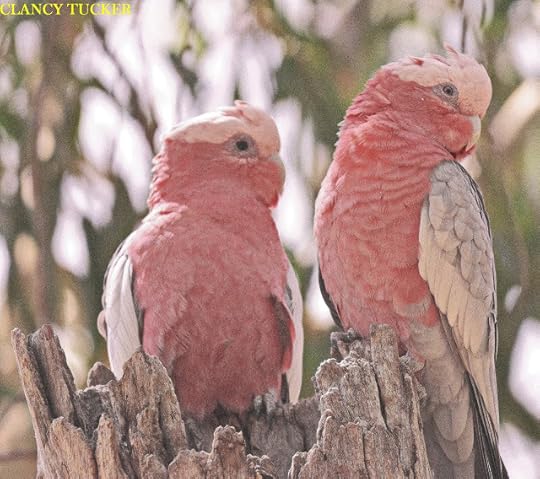
Published on April 02, 2020 15:02
April 1, 2020
2 April 2020 - SOME WEIRD AND WACKY STUFF
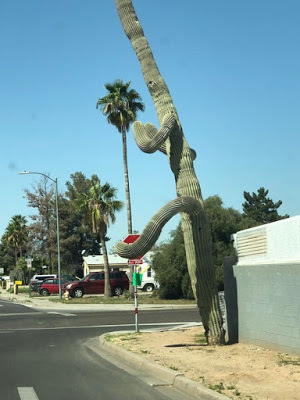
SOME WEIRD AND WACKY STUFF
G'day folks,
I am always looking for weird stuff. Check out these, but brace yourself.
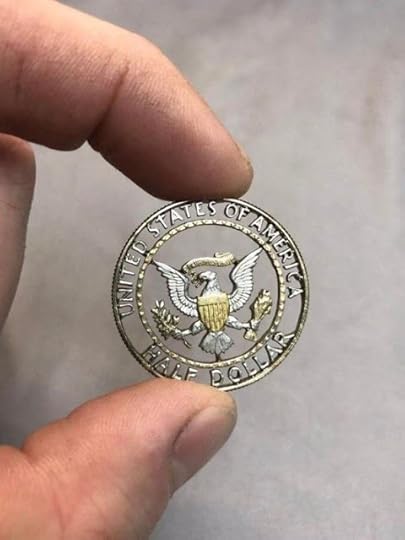




 And the Plant Manager is ... Bobbi Gardner
And the Plant Manager is ... Bobbi Gardner






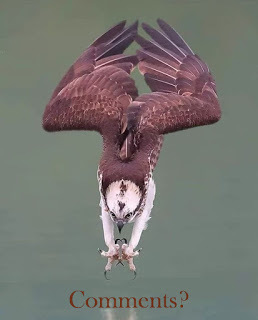
Clancy's comment: Wow. I did warn you.
I'm ...


Published on April 01, 2020 14:37
March 31, 2020
1 April 2020 - LIANG BUA CAVE IN INDONESIA
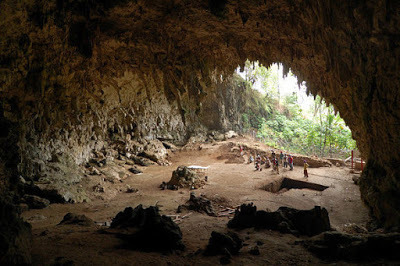
LIANG BUA CAVE IN INDONESIA
G'day folks,
Welcome to a real-life "hobbit" cave in Flores, Indonesia.
A new “hobbit” species of human was found in the remote Indonesian cave of Liang Bua. This limestone cave has yielded some of the most important finds in modern anthropology. The remains of two “hobbit” people, as the media calls them, were found here in 2003.
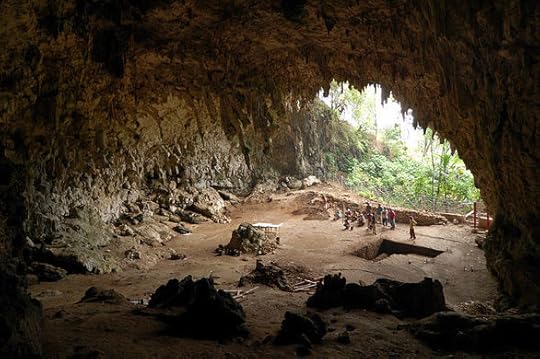
Homo floresiensis, a homo (or human) genus was discovered here by Mike Norwood, professor of anthropology at the University of New England in Armidale, New South Wales, Australia. Norwood and others have shown that this human existed as recently as 12,000 years ago, possibly putting this species in contact with local homo sapiens.
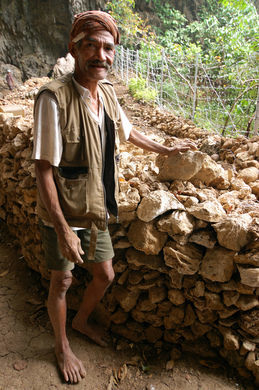
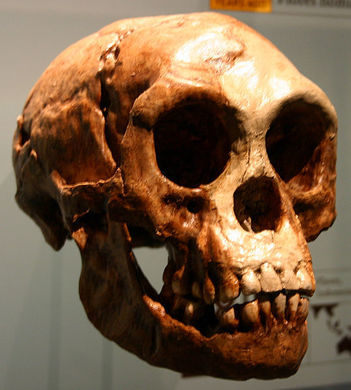
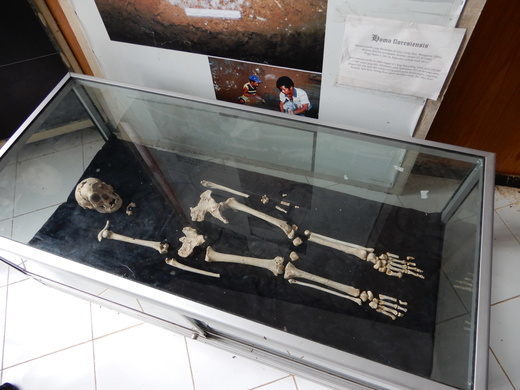
What makes H. floresiensis so remarkable is that they accomplished the same things as their larger H. sapiens cousins, such as making fire and hunting in cooperation with each other, while being less than four feet tall and having brains approximately one-half to one-third of the size of H. sapiens.
At this point, this cave is the only site where the “hobbits” of Flores, Indonesia, have been found.
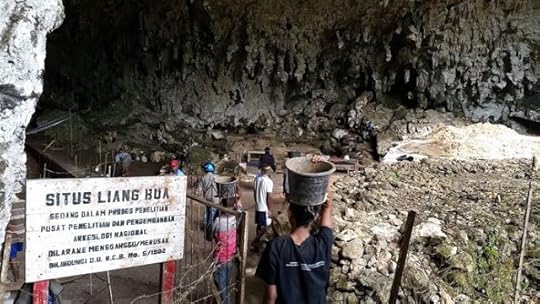
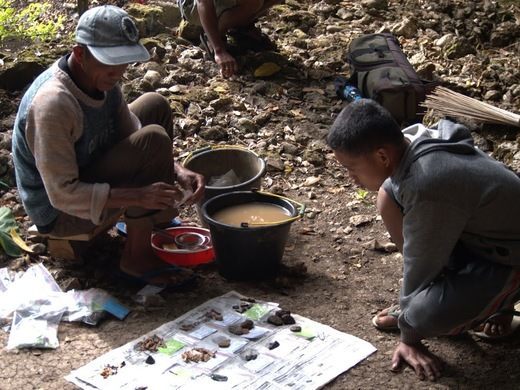
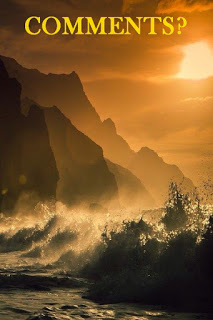
Clancy's comment: Amazing, eh? What will they find next?
I'm ...


Published on March 31, 2020 15:21
March 30, 2020
31 March 2020 - Bramhope Tunnel North Portal - England

Bramhope Tunnel North Portal - England -
G'day folks,This Gothic castle-like portal is a testament to the amazing craftsmanship of the navvies who built the railway tunnel. The Bramhope Tunnel was built for the Leeds to Thirsk railway line at the height of England’s railroad mania in the 1840s. Around the village today, you can see four of the 20 original airshafts intact, a tall sighting tower and plenty of large earth piles that look almost like small hills along the length of the tunnel. If you follow them far enough, they will lead you to this incredible castle-like facade.
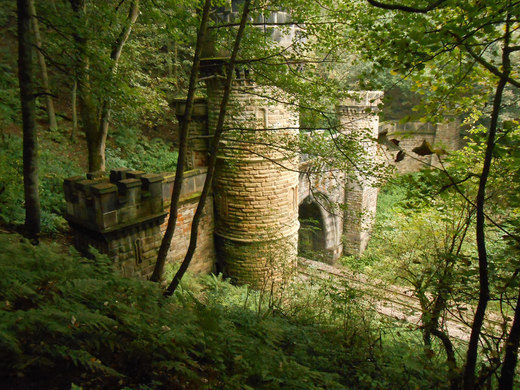 At the north entrance of the Bramhope Tunnel, a Gothic-style castellated portal was built from sandstone rock. It has three side towers with turrets, and a horseshoe-shaped archway decorated with a carving of a bearded man (possibly the likeness of the landowner for whom the facade was built). The portal is sadly somewhat in disrepair now, and often has graffiti emblazoned on it. The tunnel and the visible castle facade were constructed between 1845 to 1849 by hundreds of navvies—railway workers—who came from all over the United Kingdom and lived with their families in the area. Aside from the north portal, the tunnel is known for its impressive length, stretching just over 2 miles long.
At the north entrance of the Bramhope Tunnel, a Gothic-style castellated portal was built from sandstone rock. It has three side towers with turrets, and a horseshoe-shaped archway decorated with a carving of a bearded man (possibly the likeness of the landowner for whom the facade was built). The portal is sadly somewhat in disrepair now, and often has graffiti emblazoned on it. The tunnel and the visible castle facade were constructed between 1845 to 1849 by hundreds of navvies—railway workers—who came from all over the United Kingdom and lived with their families in the area. Aside from the north portal, the tunnel is known for its impressive length, stretching just over 2 miles long.
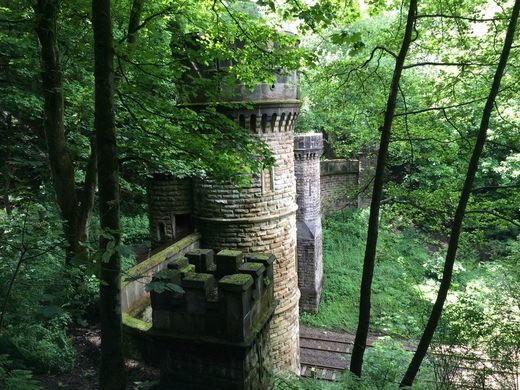
 In the end, when it was built, the entire railway line from Leeds to Thirsk cost over £2 million. It sadly also cost lives. At the time, roughly 23 workers were thought to have lost their lives building the tunnel; however, records of many others have been uncovered since. A replica of the north portal was erected as a memorial to the workers in the churchyard of Otley parish nearby.
In the end, when it was built, the entire railway line from Leeds to Thirsk cost over £2 million. It sadly also cost lives. At the time, roughly 23 workers were thought to have lost their lives building the tunnel; however, records of many others have been uncovered since. A replica of the north portal was erected as a memorial to the workers in the churchyard of Otley parish nearby.
 Clancy's comment: In all my travels around the world, I've always appreciated the workmanship of structures like this. And, as opposed to many modern structures, they will be standing for many years to come. I'm ...
Clancy's comment: In all my travels around the world, I've always appreciated the workmanship of structures like this. And, as opposed to many modern structures, they will be standing for many years to come. I'm ...

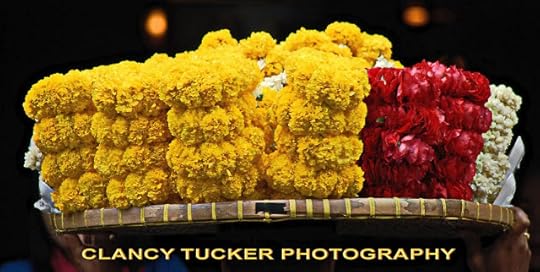
Published on March 30, 2020 12:53
March 29, 2020
30 March 2020 - RARE PHOTOGRAPHS FROM THE PAST

RARE PHOTOGRAPHS FROM THE PAST
G'day folks,
I'm always keen to look at old photographs to see if we humans have improved. Check out these fine examples.



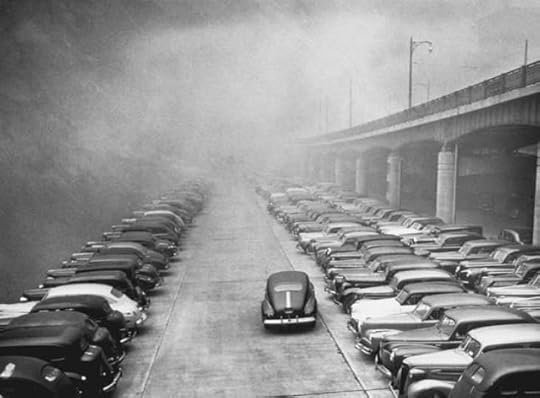
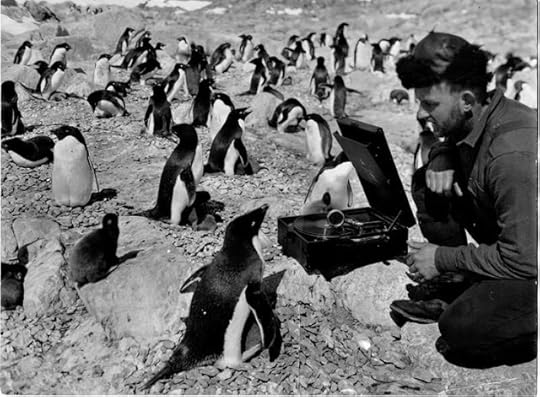




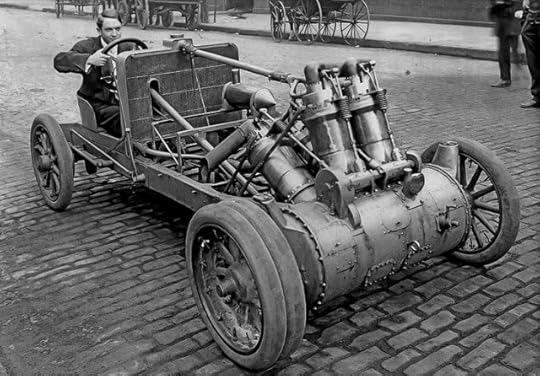
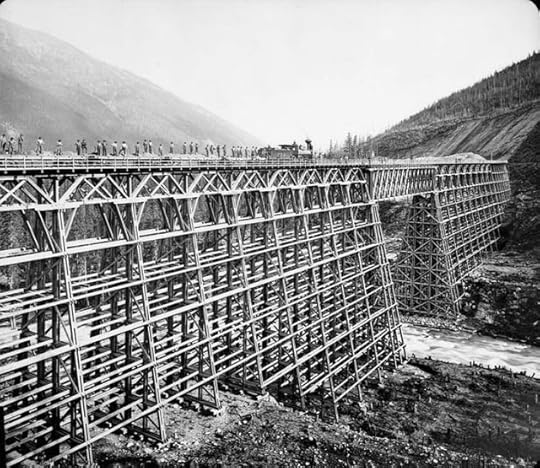


Clancy's comment: Interesting, eh? Love the fashions.
I'm ...


Published on March 29, 2020 14:25
March 28, 2020
29 March 2020 - Prehistoric Cave Art of Maros Pangkep - INDONESIA
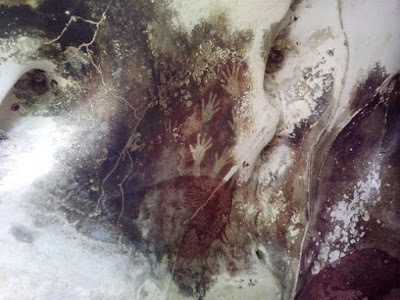
Prehistoric Cave Art of Maros Pangkep - INDONESIA -
G'day folks,These 40,000-year-old stenciled hands are older than the famous cave art in France and Spain. A torch beam finds a stencil of a hand, its ochre outline surprisingly vibrant given its age. Next to it, a sketch of a babirusa—a type of wild “pig-deer” found in Indonesia—shows such attention to detail that the gender of the animal (female) is still clear nearly 36,000 years after its creation. It’s thought to be the oldest known example of figurative art in the world. The Pleistocene-era rock art is spread throughout the karst caves within the Maros and Pangkep regions in Sulawesi, Indonesia. Researchers from Australia’s Griffith University used uranium series dating and found that one of the handprints was roughly 40,000 years old. The collection of paintings, which includes the handprint and the babirusa, contains artwork that is slightly older than the images found in European caves.
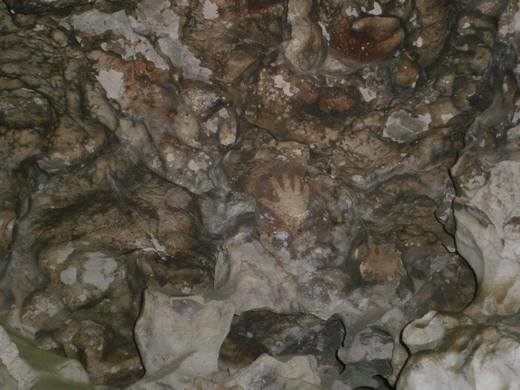

The rock art’s ancient age shattered the preexisting notion among many Western archaeologists and historians that the cave art originated in modern-day Europe. While little-known, these Indonesian cave drawings are even older than the famous stenciled caves in France and Spain.
But though it wasn’t celebrated until recently, the cave art wasn’t unknown. H.R Van Heekeren, a Dutch archaeologist, documented the figures and published his work in 1950. However, the paintings were deemed to be of no real significance and subsequently no additional exploration was done until nearly 60 years later.

The purpose behind the rock art is unclear. It’s commonly thought that sites with rock art are ceremonial, but there’s no actual evidence to say whether this is truly the case. One theory is that the rock art was an early library cataloging the animals and fish eaten by the people who dwelled here. Another theory is that the stenciled hands may have more symbolic meanings, such as protecting a house, expressing a person’s connection to the place, or attempting to communicate with the spiritual realm.

Getting to the karsts requires boating down the narrow river before an hour long walk through rice paddies. A monkey or two may shriek from the tops of the strange palm trees—described by the guide as “shrimpfingers”—before disappearing. Nearby, cows laze and graze under the monolith overhangs and ducks forage for huge snails in the rice paddies.

Clancy's comment: I am no expert, but I would respectfully suggest that some of the cave paintings in Australia are much older than these.
I'm ...
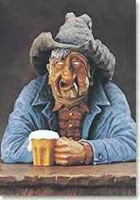

Published on March 28, 2020 15:06



